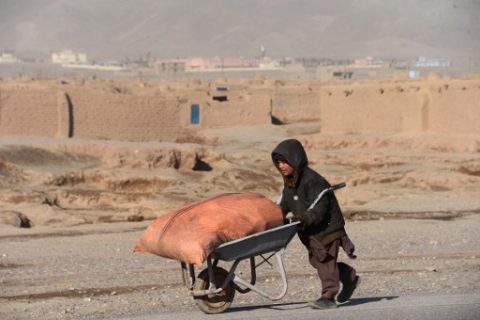
KABUL, Afghanistan (AFP) — Children account for one-third of civilian casualties in Afghanistan’s grinding conflict in the first three months of 2017, and are paying an increasingly high price in the fighting, a UN report said Thursday in Kabul.
From January to March, 210 children were killed — up 17 percent from the same period last year — and 525 injured, out of a total of 2,181 civilian casualties (715 dead and 1,466 injured).
The overall total is slightly down, by four percent, compared to the same period in 2016.
Among women, 88 deaths were recorded, a figure that jumped 54 percent from last year, mainly due to aerial bombardments — an increasing danger as the Afghan Air Force begins to carry out its own strikes.
Overall, the report showed 148 deaths and injuries from airstrikes in the first quarter, compared to 29 last year.
“We are extremely concerned about the increase in the number of casualties among women and children, particularly deaths,” said the United Nations Assistance Mission in Afghanistan (UNAMA), which has documented civilian victims of the conflict since 2009.
“The 17 per cent increase in child casualties reflects the failure of parties to the conflict to take adequate precautions to protect civilians, including through marking and clearing unexploded ordnance after fighting ends,” said Danielle Bell, head of human rights for UNAMA.
The main cause of casualties remains fighting on the ground, claiming up 35 percent of the victims.
The number of civilians fleeing fighting hit a record high last year, said the UN, with 600,000 internally displaced — which, when added to hundreds of thousands of refugees returned from Pakistan in 2016, threatens to overwhelm already meagre resources allocated to refugees.
The UN blames 62 percent of civilian casualties on anti-government elements, mainly the Taliban, who are gearing up for their spring fighting season after an unusually violent winter.
Unexploded mines and ammunition abandoned by fighters remained the second highest cause of civilian casualties (19 percent of the total), with attacks marking 17 percent.
Kabul province had the highest number of casualties thanks to multiple attacks in the capital, followed by provinces where fighting is most sustained — such as Helmand, virtually under Taliban control; Kandahar and Uruzgan in the south, and Nangarhar in the east, where the Islamic State group is in a turf war with the Taliban.
“It is civilians, with increasing numbers of women and children, who far too often bear the brunt of the conflict,” said Tadamichi Yamamoto, the UN envoy to Afghanistan.
“With the so-called fighting season imminent, I appeal to all parties to take every measure possible to prevent unnecessary and unacceptable harm to Afghan civilians.”
© Agence France-Presse








